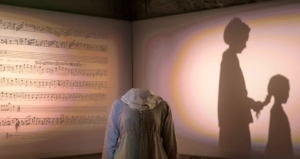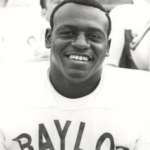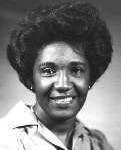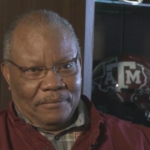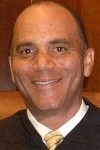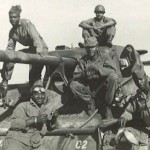What should be done with the bodies found in the Sugar Land mass graves?
Photo: A mass grave was discovered earlier this year at the construction site of the James Reese Career and Technical Center in Sugar Land. (Photo: Marie D. De Jesús, Houston Chronicle)
(Houston Chronicle) When archaeologists discovered the intact skeletons of 15,000 free and enslaved Africans at a construction site in lower Manhattan in 1991, the federal government — which planned to build an office building on the site — conferred with African-American communities, scholars and activists. Together, they signed an agreement to halt construction, rebury the bodies and establish a national monument on the site.
Officials in Sugar Land, Texas, chose a different path in April 2018 when they found 95 graves beneath the construction site of a new school.
A judge issued approval to exhume the bodies and, on June 10, archaeologists hired by the school district opened up the wooden coffins. They contained the remains of black prison laborers forced to work on Texas’ sugar cane plantations from 1878 to 1911. This form of indentured servitude, called “convict-leasing,” was common across the American South after the Civil War.
School construction has continued during the excavation. The City of Sugar Land, which owns most of the land occupied by the burial ground, quickly decided that the exhumed bodies would be reburied elsewhere.
The contrast between these two cases is illustrative. (more)
African American Museum at Fair Park to host Sally Hemings exhibit during State Fair of Texas
(Dallasnews.com) The Monticello exhibit at the African American Museum will be one of the standout features at the State Fair of Texas this year, museum officials say.
Dallas is the first city to host the groundbreaking, upgraded touring exhibit that curators say for the first time tells the most detailed story of Sally Hemings, an enslaved black woman who historians say was the mother of six children of former President Thomas Jefferson.
The exhibit title, Slavery at Jefferson’s Monticello: Paradox of Liberty, alludes to the paradox of the Declaration of Independence’s credo “that all men are created equal.” Historians say Jefferson owned more than 600 enslaved black men and women despite serving as the document’s primary author. (more)
African Americans Are Choosing Homeschooling To Teach Kids Black History
U.S. history classes devote less than 10 percent of class time to Black history, according to national research

Fed up with the lack of black history taught in schools, African-American parents are increasingly opting to home-school their children.
(NewsOne) Homeschooling is an increasingly popular way for Americans to teach their kids and other students about Black history — and it is becoming more widespread, says a new report.
One of the reasons many parents turn to homeschooling, in which they create their own curriculums, is to provide kids with a more comprehensive education about Black history, NBC News reported. U.S. history classrooms in public schools spend a limited amount of time on African-American history—less than 10 percent of total course hours, according to a 2015 study cited in a research paper released by the National Council of Social Studies last year.
Some schools may also only cover some, not all, of the Black history facts and moments that parents feel children should know. Schools might start with slavery and go to Dr. Martin Luther King Jr., glossing over other prominent, but lesser-known moments, one interviewee pointed out in NBC’s report. (more)
TIPHC Bookshelf
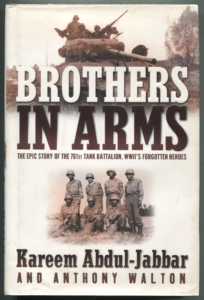 Published scholarship on black history in Texas is growing and we’d like to share with you some suggested readings, both current and past, from some of the preeminent history scholars in Texas and beyond. We invite you to take a look at our bookshelf page – including a featured selection – and check back as the list grows. A different selection will be featured each week. We welcome suggestions and reviews. This week, we offer, “Brothers In Arms, the Epic Story of the 761st Tank Battalion, WWII’s Forgotten Heroes,” by Kareem Abdul-Jabbar and Anthony Walton.
Published scholarship on black history in Texas is growing and we’d like to share with you some suggested readings, both current and past, from some of the preeminent history scholars in Texas and beyond. We invite you to take a look at our bookshelf page – including a featured selection – and check back as the list grows. A different selection will be featured each week. We welcome suggestions and reviews. This week, we offer, “Brothers In Arms, the Epic Story of the 761st Tank Battalion, WWII’s Forgotten Heroes,” by Kareem Abdul-Jabbar and Anthony Walton.
A powerful wartime saga in the bestselling tradition of “Flags of Our Fathers,” “Brothers In Arms” recounts the extraordinary story of the 761st “Black Panthers” who trained at Fort Hood in Killeen, Texas and became the first all-black armored unit to see combat in World War II.
Kareem Abdul-Jabbar first learned about the battalion from family friend Leonard “Smitty” Smith, a veteran of the battalion. Working with acclaimed writer Anthony Walton, Abdul-Jabbar interviewed the surviving members of the battalion and their descendants to weave together a page-turning narrative based on their memories and stories, from basic training through the horrors on the battlefield to their postwar experiences in a racially divided America.
Trained essentially as a public relations gesture to maintain the support of the black community for the war, the battalion was never intended to see battle. In fact, General Patton originally opposed their deployment, claiming African Americans couldn’t think quickly enough to operate tanks in combat conditions. But the Allies were so desperate for trained tank personnel in the summer of 1944, following heavy casualties in the fields of France, that the battalion was called up.
While most combat troops fought on the front for a week or two before being rotated back, the men of the 761st served for more than six months, fighting heroically under Patton’s Third Army at the Battle of the Bulge and in the Allies’ final drive across France and Germany. Despite a casualty rate that approached 50 percent and an extreme shortage of personnel and equipment, the 761st would ultimately help liberate some thirty towns and villages, as well as the Gunskirchen Lager concentration camp.
The racism that shadowed them during the war and the prejudice they faced upon their return home is an indelible part of their story. What shines through most of all, however, are the lasting bonds that united them as soldiers and brothers, the bravery they exhibited on the battlefield, and the quiet dignity and patriotism that defined their lives.
This Week in Texas Black History
Sept 9
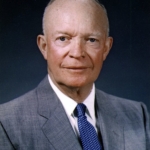 On this date in 1957, President Dwight D. Eisenhower signed into law the Civil Rights Act of 1957. Originally proposed by Attorney General Herbert Brownell, the Act marked the first occasion since Reconstruction that the federal government undertook significant legislative action to protect civil rights. Although influential southern congressman whittled down the bill’s initial scope, it still included a number of important provisions for the protection of voting rights. It established the Civil Rights Division in the Justice Department, and empowered federal officials to prosecute individuals that conspired to deny or abridge another citizen’s right to vote. Moreover, it also created a six-member U.S. Civil Rights Commission charged with investigating allegations of voter infringement. But, perhaps most importantly, the Civil Rights Act of 1957 signaled a growing federal commitment to the cause of civil rights.
On this date in 1957, President Dwight D. Eisenhower signed into law the Civil Rights Act of 1957. Originally proposed by Attorney General Herbert Brownell, the Act marked the first occasion since Reconstruction that the federal government undertook significant legislative action to protect civil rights. Although influential southern congressman whittled down the bill’s initial scope, it still included a number of important provisions for the protection of voting rights. It established the Civil Rights Division in the Justice Department, and empowered federal officials to prosecute individuals that conspired to deny or abridge another citizen’s right to vote. Moreover, it also created a six-member U.S. Civil Rights Commission charged with investigating allegations of voter infringement. But, perhaps most importantly, the Civil Rights Act of 1957 signaled a growing federal commitment to the cause of civil rights.
Sept 10
John Westbrook, a running back for Baylor University, became the first black player to compete in the Southwest Conference when he entered a game against Syracuse in the fourth quarter on this day in 1966. His debut came one week before the more celebrated start for Southern Methodist University’s Jerry LeVias.
Sept 12
On this date in 1977, Azie Taylor Morton of St. John Colony in Dale, Texas becomes the first African-American appointed to the office of Treasurer of the United States. Tabbed by President Jimmy Carter, Morton is the only black to ever hold that post. As a child, Taylor worked in cotton fields, but was an outstanding student and entered Huston-Tillotson College at age 16, graduating cum laude in 1956 with a degree in commercial education. She served as Treasurer until January 20, 1981.
Sept 12
In 1970, wide receiver Hugh McElroy of Houston (Worthing HS) became the first African-American to start a game for the Texas A&M football team. The next week, at LSU, he became A&M’s first black player to score a touchdown when he caught a short pass from quarterback Lex James for the winning touchdown with 13 seconds left in the game giving the Aggies a 20-18 upset.
Sept 12
Singer and composer Barry White was born on this date in 1944 in Galveston, but was raised in Los Angeles, where he began his musical career at age 11 playing piano (self-taught) on the Jesse Belvin hit, “Goodnight My Love.” White also made several records during the early 60s, under the name “Barry Lee.” In 1969, he put together “Love Unlimited,” a successful female vocal trio. A five-time Grammy winner, his gravelly, seductive, bass voice also earned him 106 gold and 41 platinum albums, 20 gold and 10 platinum singles, with worldwide sales in excess of 100 million.
Sept 13
Olympic sprint gold medalist Michael Johnson was born on this day in Dallas in 1967. Johnson graduated from Baylor University in 1990 with a marketing degree. As an Olympian, he won 18 gold medals combined in the 200- and 400-meter events and was national champion in those events eight times. at the 1996 Olympicswhere he became the first man to ever win gold at 200 meters and 400 meters at the same Olympics.
Sept 14
In 2004, San Antonio native Wallace Jefferson became the first African American Chief Justice of the Supreme Court of Texas when he was appointed to the post by Gov. Rick Perry. The University of Texas School of Law honored Chief Justice Jefferson with its Outstanding Alumnus Award in 2005. He is the descendant of a slave who was owned by a Waco judge before the Civil War. That slave, Shedrick Willis, served his community as a two-term member of the Waco City Council after the War.
Sept 15
The 761st Tank Battalion arrived at Camp Hood in Killeen on this day in 1943 to begin advanced training for duty in World War II. Known as the “Black Panthers,” the 761st would become the Army’s first all-black tank unit and they served with valor. However, the widely held belief in Washington, D.C. about using blacks in combat roles, especially in armored units, was as one officer observed, “As fighting troops, the Negro must be rated as second-class material, this primarily to his inferior intelligence and lack of mental and moral qualities.” Early on, Gen. George S. Patton had agreed with that sentiment, saying, “A colored soldier cannot think fast enough to fight in armor.” Yet, when he needed armored reinforcements for his Third Army, he got the 761st, which he had seen training at Camp Hood. Upon their arrival in Europe, he addressed the men and told them, “I would never have asked for you if you weren’t good. I have nothing but the best in my Army. I don’t care what color you are as long as you go up there and kill those Kraut sons of bitches. Everyone has their eyes on you and is expecting great things from you. Most of all your race is looking forward to you. Don’t let them down and damn you, don’t let me down!’ The 761st was involved in combat for 183 straight days, including action in the Battle of the Bulge. The unit received the Presidential Unit Citation and one of its members, Staff Sgt. Ruben Rivers, posthumously received the Congressional Medal of Honor. The tankers also participated in the liberation of Gunskirchen, a subcamp of the Mauthausen concentration camp, in May 1945.
Blog: Ron Goodwin, Ph.D., author, PVAMU history professor
Ron Goodwin is an assistant professor of history at Prairie View A&M University. Even though he was a military “brat,” he still considers San Antonio home. Like his father and brother, Ron joined the U.S. Air Force and while enlisted received his undergraduate degree from Texas Lutheran University in Seguin, Texas. After his honorable discharge, he completed graduate degrees from Texas Southern University. Goodwin’s book, Blacks in Houston, is a pictorial history of Houston’s black community. His most recent book, Remembering the Days of Sorrow, examines the institution of slavery in Texas from the perspective of the New Deal’s Slave Narratives.
Recent Posts
The revolution “was” televised
Fifty years ago, black revolutionaries adopted the phrase “the revolution will not be televised” in response to the vast social upheaval of the 1960s. Many Vietnam War protestors believed the new medium of television would be the venue that illustrated the change in American democracy. However, black revolutionaries believed television would not capture the full essence of the movement because the changes that must occur in this society will be live and not scripted by…(more)
Democratic Party – Fifty Years Later
In 1968, the Democratic Party met in Chicago to nominate its candidate for president. The Party was in chaos after the violent deaths of Robert Kennedy and Martin Luther King, Jr. While King was not an acknowledged political figure, his non-violent social stance and his views on American involvement in Vietnam was influencing public policies. Perhaps more influential in the forthcoming implosion of the Democratic Party was the death of Robert Kennedy. His politics of…(more)
Submissions wanted
Historians, scholars, students, lend us your…writings. Help us produce the most comprehensive documentation ever undertaken for the African American experience in Texas. We encourage you to contribute items about people, places, events, issues, politics/legislation, sports, entertainment, religion, etc., as general entries or essays. Our documentation is wide-ranging and diverse, and you may research and write about the subject of your interest or, to start, please consult our list of suggested biographical entries and see submission guidelines. However, all topics must be approved by TIPHC editors before beginning your research/writing.
We welcome your questions or comments. Please contact Michael Hurd, Director of TIPHC, at mdhurd@pvamu.edu.

